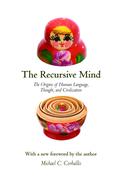Foreword to the Paperback Edition
____
The rather biblical notion that we humans were miraculously gifted language seems to persist unabated. In a recent popular and engaging book, published in 2012, the distinguished paleoanthropologist Ian Tattersall wrote as follows:
Our ancestors made an almost unimaginable transition from a non-symbolic, nonlinguistic way of processing information and communicating information about the world to the symbolic and linguistic condition we enjoy today. It is a qualitative leap in cognitive state unparalleled in history. Indeed, as I’ve said, the only reason we have for believing that such a leap could ever have been made, is that it was made. And it seems to have been made well after the acquisition by our species of its distinctive modern form.1
How lucky we were, you might think, to receive this blessing. Without it, you wouldn’t be reading this book.
In the first edition of this book, I tried to broaden the discussion as to what makes us human by arguing that recursion, often considered the critical component of language that distinguishes it from communication in other species, applies not only to language, but to other aspects of human thought. These include the recursive ability to insert the thoughts of others in our own thoughts and to insert past or future experiences into current experience, otherwise known as mental time travel. These considerations led me to suppose that recursive thinking, and indeed language itself, probably evolved gradually over the past six million years or so of hominin evolution, and that some elements of recursive thinking may even be present in great apes. In short, we don’t need to appeal to sudden miracles.
The problem with attempts to explain the human condition, though, is that the evidence keeps nibbling away at one’s hard-won conclusions. In my case, as I perhaps should have anticipated, the nibbling was done by rats. For some years, Thomas Suddendorf and I had argued that mental time travel was unique to humans—a conclusion extending earlier claims by the psychologist Endel Tulving that episodic memory was unique to our species. As I recount in the book, the brain structure that appears to be critical to mental time travel is the hippocampus. When people remember past events or imagine future ones, the hippocampus is activated, and destruction of the hippocampus leaves its victim effectively stuck in the present. This was well documented by Deborah Wearing’s 2005 book, Forever Today, the account of her husband Clive Wearing’s time-shrinking plight after a virus attacked his hippocampus.2 The same theme appears in Suzanne Corkin’s 2013 book, Permanent Present Tense, on the late Henry Molaison, more famously known as H.M., whose hippocampus was destroyed by a brain operation.3 The titles of these books tell their stories.
But other mammals, and even birds, have hippocampi. It has long been known that the hippocampus of the rat contains cells that respond when a rat is in a particular location in some environment, such as a maze. These cells are known as place cells. It transpires that these cells fire in sharp-wave ripples when the rat is removed from that environment, and that the sequence of firing effectively maps out a trajectory in the environment. Sometimes the trajectory is one the animal had previously traversed, but sometimes it is the reverse of that trajectory, and sometimes it is a trajectory unrelated to one actually traversed. It seems that the rat is mentally reliving a past experience, or imagining a future one, or perhaps even indulging in a peripatetic fantasy. Early in 2013, I wrote a short paper suggesting that rats could travel mentally in time, embedding past and perhaps future episodes into the present.4
I have little doubt that our own mental time travels are more complex and more interesting. Moreover, we can talk about our mental time travels; indeed, I suggest in the book that language evolved precisely to enable us to communicate about the nonpresent—events that do not take place in the here and now. Rats, on the other hand, can’t talk, and must therefore keep their mental time travels to themselves. To find out about them, neuroscientists had to insert electrodes into their hippocampi. The results remind us that we should always be wary of assertions about human uniqueness. The origins of mental time travel may go back much further in evolution than I suggest in the book. So far, that is my only reservation, but it pays always to watch out for rat nibblings.
Notes
1. Tattersall, I. 2012, 199.
2. Wearing 2005.
3. Corkin 2013.
4. Corballis 2013.
Additional references
Corballis, M.C. 2013. Mental time travel: A case for evolutionary continuity. Trends in Cognitive Sciences, 17, 5–6.
Corkin, S. 2013. Permanent present tense. New York: Basic Books.
Tattersall, I. 2012. Masters of the planet: The search for human origins. New York: Palgrave Macmillan.
